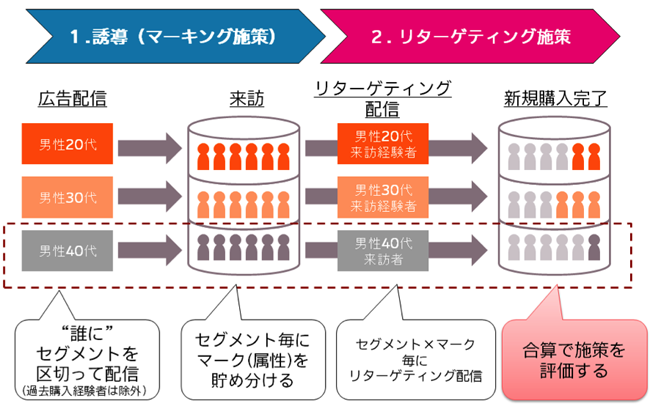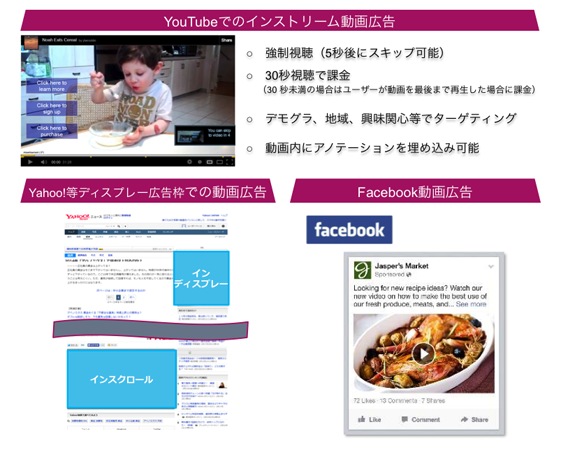The Ultimate Goal: Real-Time PDCA
A paradigm shift is occurring that overturns the conventional wisdom of advertising, where advertisers control placements and proactively enhance results. However, this also means that significant differences now arise based on the presence or absence of operational strategy and know-how. The latter half introduces the know-how of performance-based advertising through case studies and presents the ideal state pursued by next-generation marketing.
Expanding Reach and Improving Conversion Efficiency by Redefining CPA
Digital advertising now offers highly flexible targeting and a wide range of creative variations. The core concept of performance advertising is to maximize these features, actively improve ad effectiveness through PDCA cycles, and drive results. We covered this point in Part 1.
In the second part, we will explain, using case studies, both direct response approaches and branding approaches that are effective for converting "potential" customers within the customer funnel.
Nextedge Dentsu Inc.'s direct response solution approach involves aggressively utilizing display ads to expand reach to potential customers, thereby improving conversion efficiency, followed by acquiring customers through retargeting. While retargeting ads themselves are widely used, the preceding phase of expanding reach is generally considered unprofitable when considering CPA (Cost Per Acquisition). Overcoming this perception by redefining CPA is the key point of this approach.
Let's examine a specific case study from an e-commerce company. Their challenge was acquiring new customers, but push-type display ads yielded an unfavorable CPA. Therefore, they first recalculated the acceptable CPA for converting potential customers into new ones. Instead of basing it on profit from a single sale, they calculated it based on the total purchase amount that customer would generate over the long term.
Next, they implemented a two-step PDCA cycle: one phase guiding users from ad delivery to site visit, and another phase tracking subsequent purchase completion. Finally, they combined these effects to identify the most effective segment among those initially set for reaching the potential audience. This level of precision is uniquely achievable with performance-based advertising, which enables granular targeting.
In performance advertising, it's effective not to fix your target audience from the start, but to test several targeting approaches to discover effective segments. Improve efficiency while increasing delivery of promising strategies to boost acquisition numbers. While this might not be easy, the real thrill of operations lies in "refining" strategies through tuning.
Focusing on Brand Awareness and Intent Effects, Anticipating Offline Outcomes
Regarding the other approach, the branding-oriented strategy. Here, we use an appliance manufacturer dealing in durable goods as an example. The goal of this initiative was to promote online consideration and drive in-store purchases for a new product targeting a niche audience. The challenge was that display ads lacked sufficient appeal, while TV commercials were too wasteful.
Therefore, we explored ways to use advertising budgets efficiently by clarifying effects beyond direct purchases. Specifically, we tracked the subsequent actions of viewers who completed web video ads to visualize their view-through effect (whether viewers who only saw the ad, without clicking, later accessed the product site via search, etc.) and brand awareness impact.
The main types of web video ads currently include: - In-stream video ads: Ads that play before content on YouTube or video sites. - In-scroll ads: Videos that appear within Yahoo articles. - Facebook News Feed video ads. Regardless of the type used, the key point is to define KPIs (key performance indicators) upfront to avoid confusion later. Impressions, completion rates, and visits to product pages can be easily tracked via management dashboards. Brand awareness and purchase intent can also be measured by adding a simple post-view survey.
While ultimately tied to in-store purchases, these can be estimated on a correlation basis. Though varying by product, durable goods often involve online research before purchase. In this case, a correlation existed between product detail page views and in-store sales. Tracking these intermediate metrics allows for statistically estimating digital advertising's contribution to sales and setting valid operational benchmarks.
Additionally, for products where phone conversions are common after web browsing, techniques like displaying different call center numbers based on traffic source for "Web-to-Call" measurement have emerged. These methods effectively link digital ad impact to real-world metrics and are also valuable to utilize.
It is crucial to monitor both the short-term effects contributing to sales promotion and the long-term effects contributing to branding, including brand awareness and purchase intent. A key characteristic of the branding approach is recognizing initiatives that lay the foundation for purchases as achievements and elevating potential demand from latent to consideration stages.
Realizing real-time PDCA is synonymous with competitiveness.
Finally, I'll discuss the challenge of real-time PDCA as the ultimate goal of performance advertising.
Even when the potential of performance advertising is understood, continuous improvement often fails to materialize into tangible results. To prevent this, it is crucial to review operations across three stages: reporting, communication, and operations.
For reporting, consolidating data sources into a single dashboard tool enables visualization and real-time updates. Communication also speeds up when discussions for review and improvement actions are held directly while viewing the dashboard, rather than spending time creating materials. Operations, meanwhile, require systematizing and automating winning patterns. For example, since purchase rates typically rise on rainy days for e-commerce sites, linking operations to weather data—such as raising bid prices in rainy regions—yields results without extra effort. There are likely many more areas ripe for mechanization.
Grasp the entire customer funnel, set appropriate KPIs, and gradually narrow segments while fine-tuning. Visualize effectiveness, including branding and offline spillover effects. Aim for real-time reporting and systematized/automated operations. Accumulating know-how and evolving incrementally is the strategy for achieving results in performance advertising.
In today's world where all media and channels are connected through data, the ability to execute PDCA in real time is the very essence of competitiveness. As a partner supporting businesses, Nextedge Dentsu Inc. aims to return to the ideal marketers truly aspire to, creating results and building partnerships to realize next-generation marketing.


